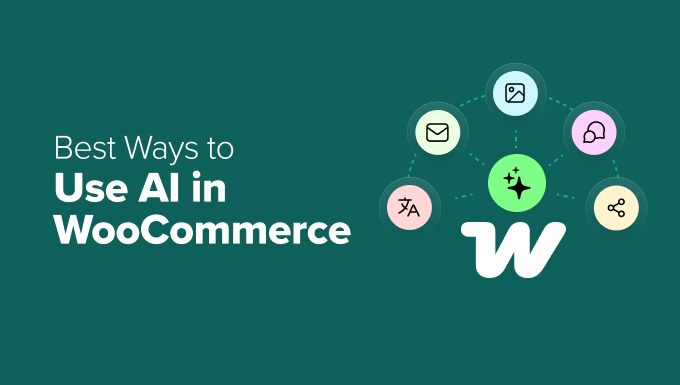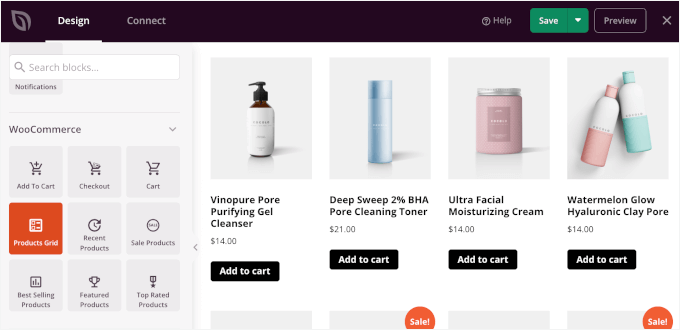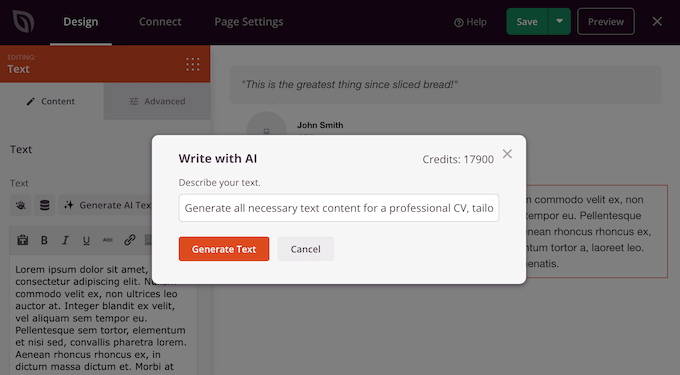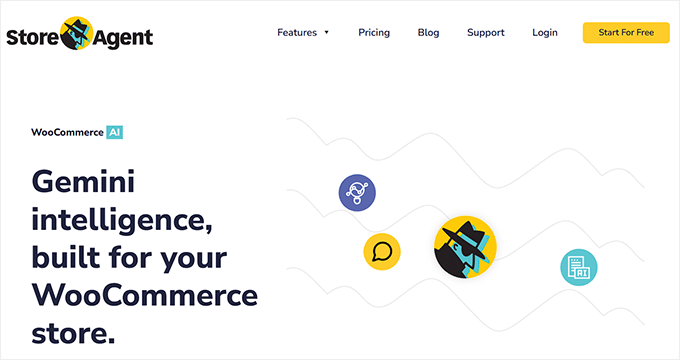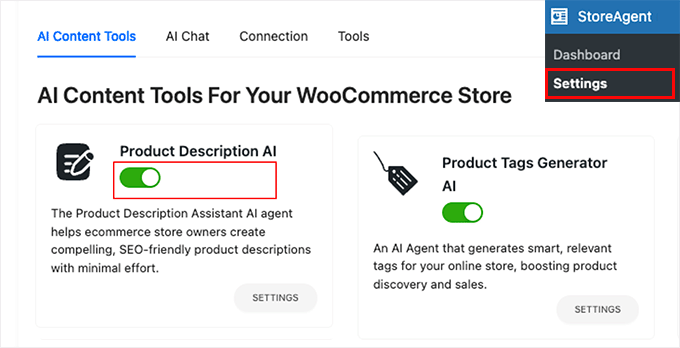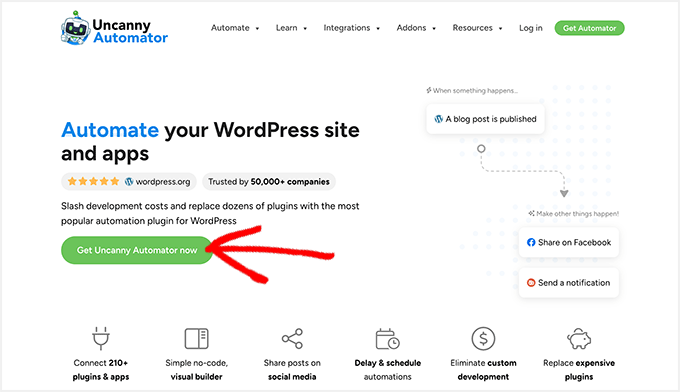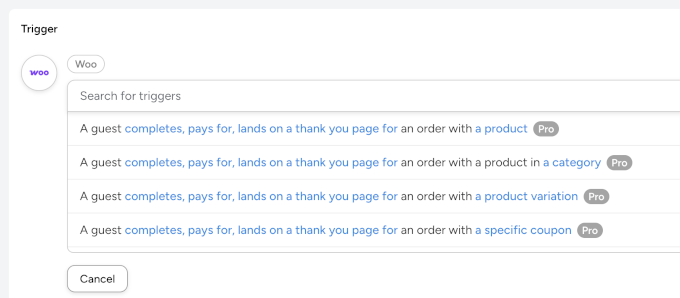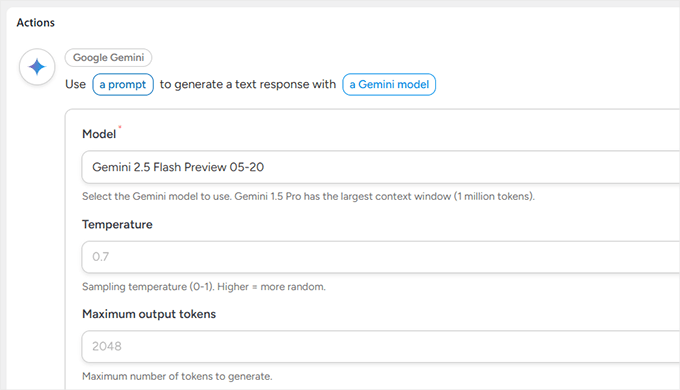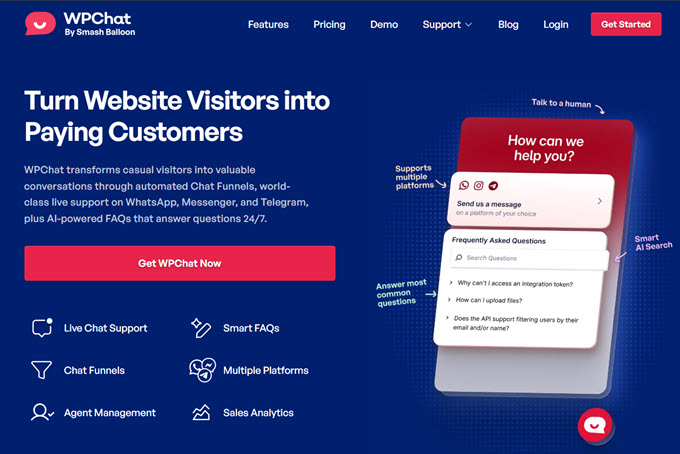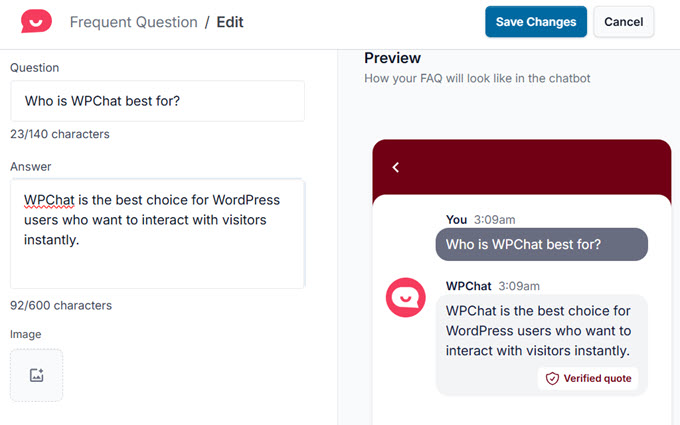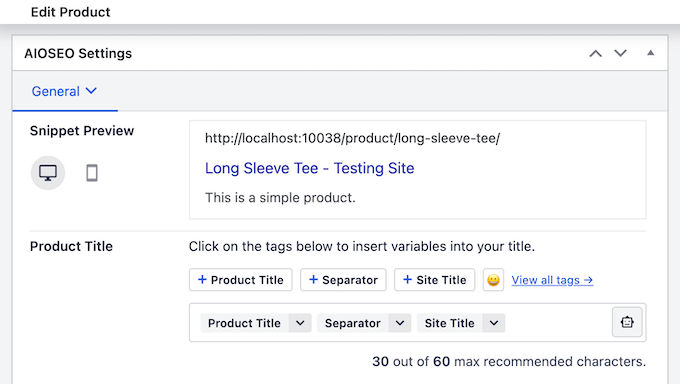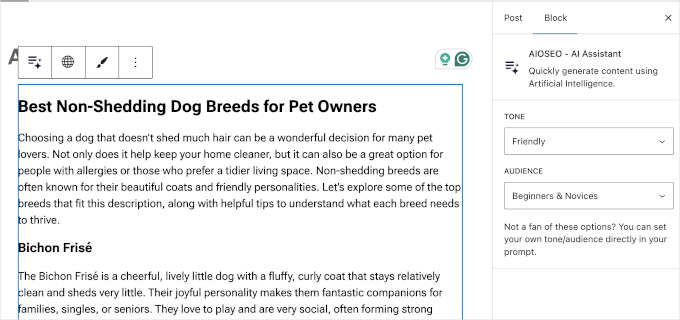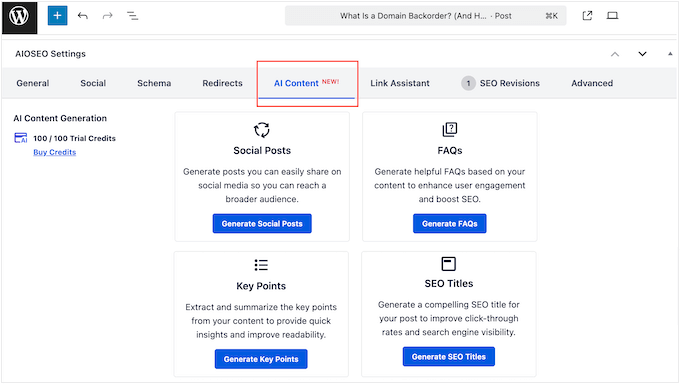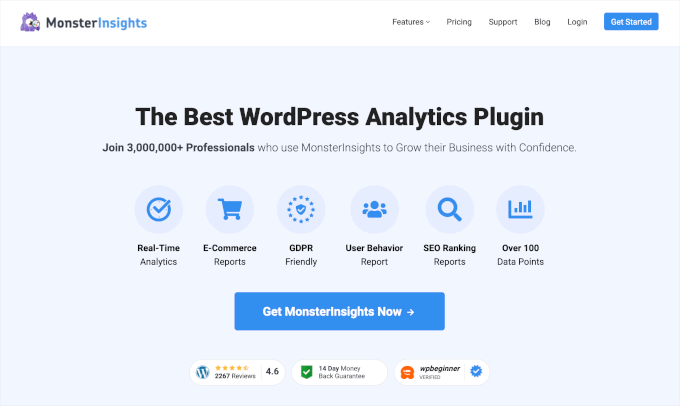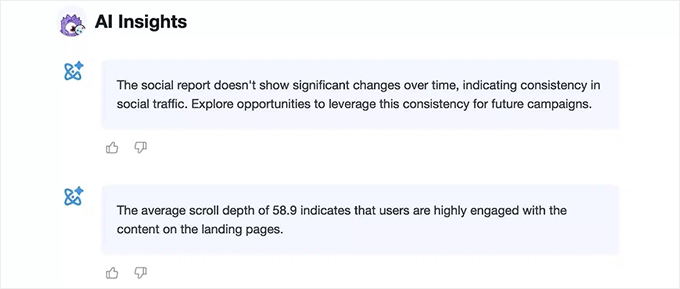Automating processes on your WordPress website doesn’t have to be complicated. Tools like n8n are powerful, but they often require extra hosting, webhooks, and a lot of technical setup.
That’s why many beginners feel stuck before they even get started. The good news is that you can actually use a plugin to automate many common WordPress tasks.
In this guide, I’ll show you how to add n8n-like automation in WordPress using Uncanny Automator.
You can automatically connect your plugins, trigger actions based on user activity, and even build AI-powered workflows, all without touching a single line of code.
By the end, you’ll be able to automate everyday WordPress processes in a way that’s easier, cheaper, and beginner-friendly.
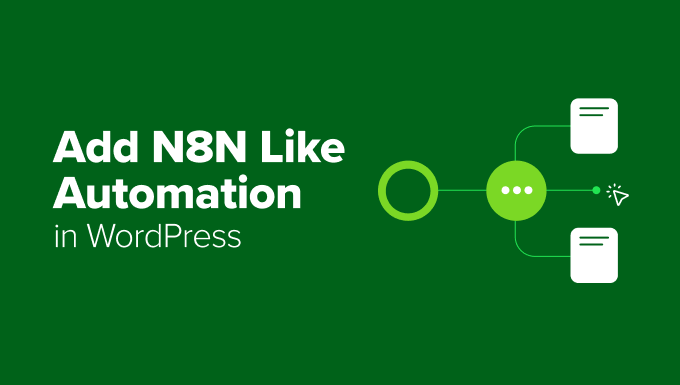
💡Quick Answer: How to Add n8n Like Automation in WordPress
You don’t need n8n to get powerful automation on your WordPress site. With Uncanny Automator, you can connect plugins, run AI-powered tasks, and automate repetitive workflows without coding or webhooks.
Here’s how it works:
- Install and activate Uncanny Automator (Pro version needed for some integrations).
- Connect your external apps like Google Sheets or OpenAI inside Automator.
- Create a recipe by selecting a trigger, such as a WooCommerce purchase or WPForms submission.
- Add actions for what should happen next—like adding a row to Google Sheets, creating a new user, or sending AI-generated emails.
- Map dynamic fields using the dropdowns—no JSON or API setup required.
- Save and activate your recipe, and your workflow runs automatically whenever the trigger occurs.
Here’s a quick overview of all the topics I’ll cover in this guide:
- What Is n8n?
- Where Does n8n Fall Short for WordPress Users?
- Why Use Uncanny Automator Instead of n8n?
- How to Use Uncanny Automator for WordPress Workflows
- More Real-World Use Cases for WordPress Automation: What You Can Build (That's Harder in n8n)
- FAQs About Using Uncanny Automator vs. n8n
What Is n8n?
n8n is an open-source workflow automation tool that lets you connect different apps and services to automate tasks.
Instead of writing code, you build workflows using a visual, node-based editor. Each node represents a step, such as receiving data, processing it, or sending it to another app. This makes it possible to create powerful, multi-step automations.

I’ve tested n8n several times, and it’s a solid tool. Once you understand how everything fits together, it works smoothly and gives you a lot of flexibility.
n8n is commonly used for:
- Syncing data between different tools and platforms
- Handling webhook-based events
- Creating multi-step automation workflows across multiple apps
This level of flexibility is great for advanced setups. But for many WordPress users, it can feel like more than they actually need—especially for everyday automation tasks.
Where Does n8n Fall Short for WordPress Users?
n8n is powerful, but it wasn’t built specifically for WordPress. Even simple automation tasks can feel complicated and confusing if you’re not a developer.
Here are the main reasons it can be tricky for WordPress users:
- No Native Plugin Integration: If you’re a beginner, it can be really difficult and time-consuming to find and connect the right API for every tool you want to automate.
- Data Mapping Complexity: WordPress often sends data in formats that n8n doesn’t understand right away, so you need to spend extra time translating and mapping fields correctly.
- Limited WordPress-Specific Triggers: It’s not easy to track events like user role changes, post status updates, or plugin actions such as WooCommerce orders, which are common tasks for WordPress sites.
- Extra Setup and Maintenance: Managing servers, keeping everything updated, and securing webhooks takes a lot of time and technical knowledge, which can be frustrating if you just want automation to work.
These challenges can make automation harder than it needs to be. To get a better sense of the hidden costs and extra effort involved, check out the dropdown below.
🤯The Three Hidden Costs of Using n8n for WordPress
Automating WordPress with n8n can seem simple at first, but I’ve discovered there are some hidden costs and time commitments that beginners often don’t expect.
Here’s a quick breakdown of the main challenges:
| Hidden Cost | What It Means | Typical Cost / Time |
|---|---|---|
| Infrastructure Costs | You need a Private Server (VPS) or self-managed hosting to run n8n, along with a domain and SSL certificate. | VPS hosting: $12–24/month n8n.cloud: starts at $20/month for 2,500 workflow executions |
| Time Investment | Setting up workflows, testing them, and maintaining them every month takes time and effort. | Initial setup: 4–8 hours Monthly maintenance: 2–4 hours |
| Learning Curve | n8n requires understanding webhooks, JSON mapping, and error handling. | Estimated 10–20 hours to get everything working correctly |
The bottom line is that creating even a simple n8n workflow for WordPress can be more complicated and time-consuming than most users expect.
Why Use Uncanny Automator Instead of n8n?
If you want powerful automation for WordPress without the technical headaches, Uncanny Automator is the best option.
I’ve tested both n8n and Uncanny Automator multiple times, and I can say from experience that while n8n is very powerful, it comes with a steep learning curve.
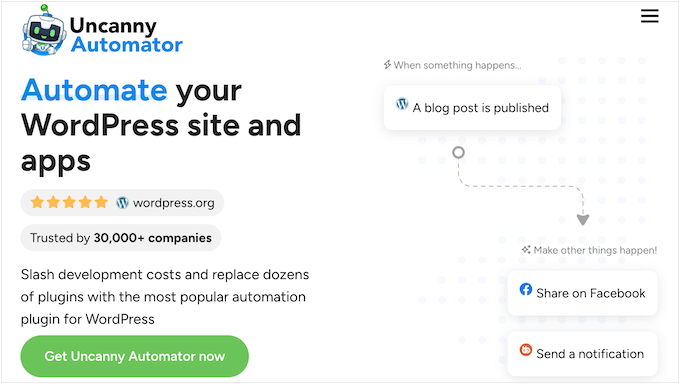
You need to set up webhooks, handle APIs, parse JSON, and manage authentication—steps that can take hours for even a simple workflow.
Uncanny Automator, on the other hand, makes all of this so much simpler. You don’t need external servers, webhooks, or complex technical setups.
Everything happens directly inside WordPress, and you can connect plugins and trigger actions without touching a single line of code.
Here’s a quick comparison of a typical workflow in n8n versus Uncanny Automator:
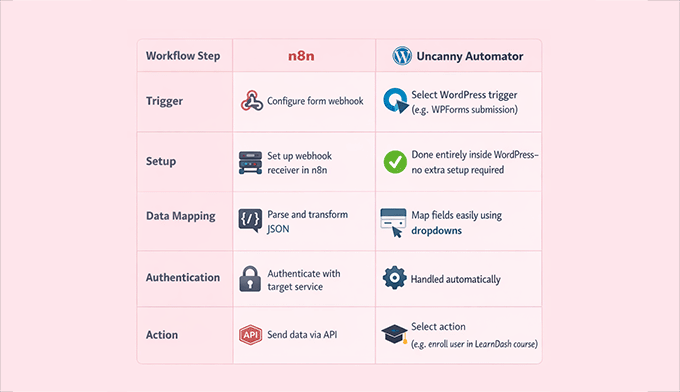
Even with all this simplicity, Uncanny Automator is still incredibly powerful. You can automate complex workflows, connect dozens of plugins like WooCommerce, LearnDash, WPForms, MemberPress, BuddyPress, and more.
Plus, you get to handle multiple triggers and actions in a single workflow. It lets you focus on what you want to happen, not the technical mechanics behind it.
This combination of ease-of-use and power is what makes Uncanny Automator a game-changer for WordPress users compared to n8n.
Pricing Comparison: n8n vs Uncanny Automator
When it comes to automation, cost isn’t just about money—it’s also about your time and effort.
Here’s how n8n stacks up against Uncanny Automator:
| Cost Factor | n8n | Uncanny Automator |
|---|---|---|
| Setup Costs & Time | 4–8 hours to configure webhooks, servers, APIs, and authentication | A few minutes to select triggers and actions inside WordPress |
| Ongoing Maintenance | 2–4 hours per month for server updates, workflow monitoring, and troubleshooting (~$100–200/month in value) | Minimal—runs on your existing WordPress hosting with no extra maintenance |
| Hosting / Infrastructure | VPS hosting $12–24/month or n8n.cloud subscription starting at $20/month | Uses your existing WordPress hosting (+ starting at $199 per year for the plugin’s annual license) |
| Per-Task / Execution Limits | n8n.cloud has usage limits based on workflow executions | Unlimited automations on your site (external APIs like OpenAI may still charge usage fees) |
| Learning Curve | 10–20 hours to understand webhooks, JSON mapping, and error handling | Almost zero—plain-English triggers, dropdown mapping, visual recipe builder |
💡Key Takeaway: For active WordPress sites, Uncanny Automator offers predictable, flat pricing and eliminates the hidden costs of hosting, maintenance, and technical setup, while still giving you all the power you need for complex automation.
When is n8n a Better Choice?
I want to be transparent here—no single tool fits every scenario.
While Uncanny Automator covers nearly all WordPress workflows without touching code, some situations demand advanced flexibility, complex data handling, or integration across multiple platforms.
Understanding these limitations helps you choose the right tool for the right job.
In my opinion, n8n could be better for:
- Automating between multiple non-WordPress systems, like syncing CRMs, SaaS platforms, or databases.
- Complex data transformations, such as regex, JSON parsing, or custom logic that WordPress plugins don’t handle natively.
- Using a single automation platform for your entire tech stack, especially if your workflows span multiple apps.
- Workflows that require extensive custom code execution, where visual dropdowns won’t cover all the requirements.
I also recommend a hybrid approach for many WordPress site owners. You can use Automator for WordPress-internal workflows and connect to n8n for external system integrations via Automator webhooks.
This lets you enjoy simple, no-code automation inside WordPress while still using n8n’s power for complex tasks.
How to Use Uncanny Automator for WordPress Workflows
Uncanny Automator isn’t just for simple tasks—you can use it to automate a wide range of workflows right inside WordPress.
For example, you can:
- Automatically log WooCommerce purchases to Google Sheets.
- Generate content automatically from form submissions using OpenAI.
- Create new user accounts after a purchase or form submission.
- Analyze WooCommerce reviews or blog comments with AI to detect negative sentiment and alert your team.
- Connect your WordPress site to tools like Google Sheets, Slack, Zoom, Mailchimp, or even use Zapier for special edge cases—all without complex API setups.
To learn more about the plugin itself, you can check out our detailed Uncanny Automator review.
If this is your first time using an automation plugin, don’t worry. I’ll walk you through setting up a workflow in WordPress.
I’ll show you one example: logging WooCommerce purchases to Google Sheets and creating a user account on your site.
The process is very similar for almost any other automation you want to create, whether it’s AI content generation, user notifications, or syncing data between plugins.
Step 1: Install and Activate Uncanny Automator
The first thing you need to do is sign up for an account on the Uncanny Automator website. Just click on the ‘Get Uncanny Automator now’ button and follow the steps to sign up for an account.
📌 Note: Uncanny Automator also has a free version. But since this workflow uses Google Sheets and WooCommerce, you’ll need a premium plan to unlock those platforms.

Next, go to your WordPress dashboard. Here, you will need to install the free core plugin and the premium plugin (which you can find in a zip file in your Uncanny Automator account) for the integrations to work.
If you don’t know how to do that, check out our step-by-step guide on installing WordPress plugins.
Once everything is installed, go to Automator » Settings in your WordPress dashboard and enter your license key. You can find this information in your account on the Uncanny Automator website.
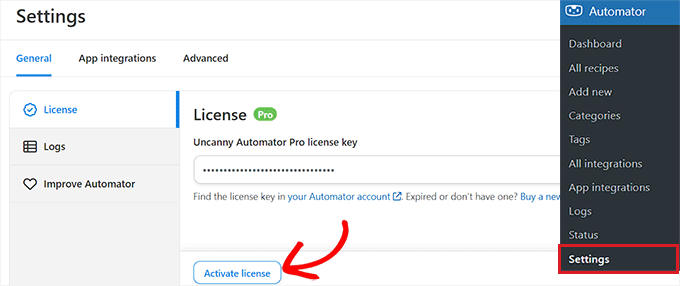
After entering the key, click the ‘Activate License’ button, and you’re ready to start creating automations.
Step 2: Connect Uncanny Automator to Google Sheets
For this workflow, you need to connect Google Sheets so that every WooCommerce purchase can be automatically logged in a spreadsheet.
This connection only needs to be set up once, and after that, Uncanny Automator will automatically update your chosen spreadsheets whenever a new order comes in.
To get started, go to Automator » App Integrations and select ‘Google Sheets’ from the left column.
Click the ‘Sign in with Google’ button, then choose the account you want to link. If your account isn’t listed, you can add it using the ‘Use Another Account’ option.
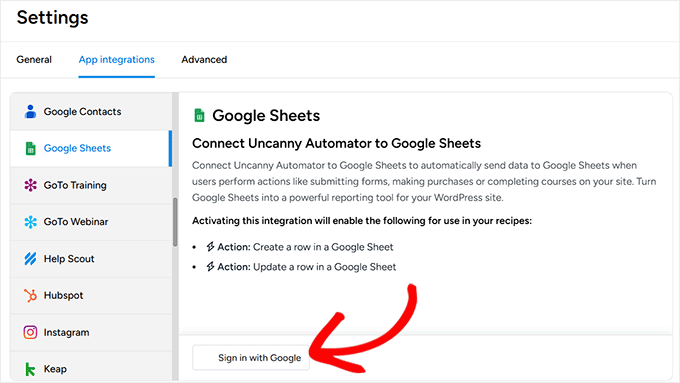
Next, Google will ask for permissions so Uncanny Automator can access your spreadsheets.
This is completely normal, and the plugin only uses these permissions to add new rows to the spreadsheets you select.
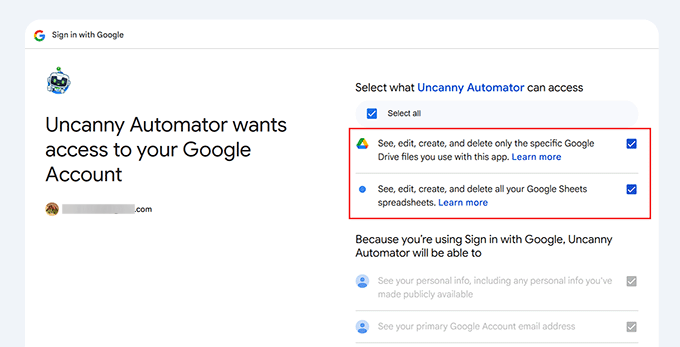
Once you approve, you’ll be redirected back to your WordPress dashboard with a confirmation that your account is connected.
Finally, click ‘Select new sheet(s)’ and choose the spreadsheet you want to use for your WooCommerce store.
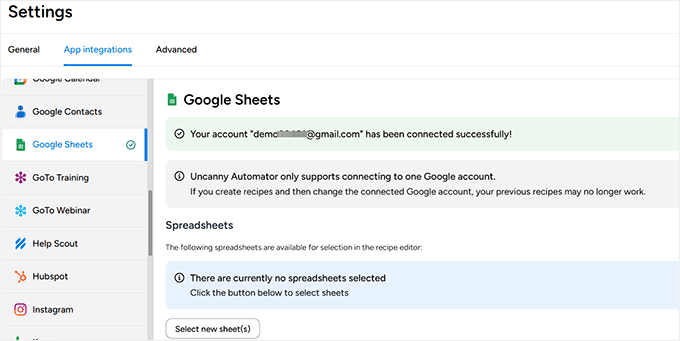
You can add multiple spreadsheets if needed, and all connected sheets will appear in the recipe editor when building automations.
For a more detailed, step-by-step guide on connecting Google Sheets, you can also see our tutorial on how to connect WooCommerce to Google Sheets.
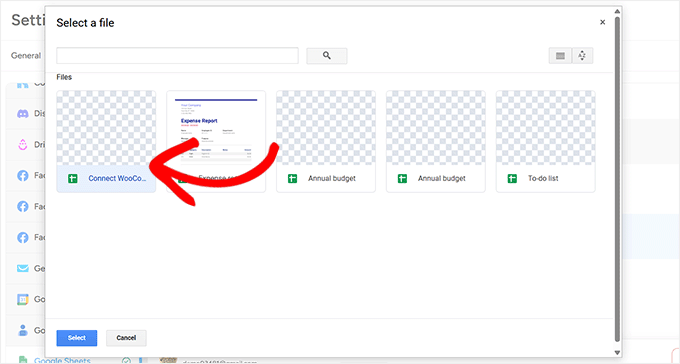
Step 3: Create a Recipe and Set the WooCommerce Trigger
After connecting to Google Sheets, it’s time to create the automation itself. In Uncanny Automator, this automation is called a recipe.
Each recipe has two simple parts. The trigger is what starts the automation, and the action is what happens next.
Right now, I’ll be focusing on the trigger—the WooCommerce event that will start everything.
To get started, go to Automator » Add new recipe from your WordPress dashboard.
Here, you’ll be asked to choose between a ‘Logged-in’ recipe and an ‘Everyone’ recipe. Logged-in recipes only run when a user is signed in, but WooCommerce orders are often placed by guest customers.
Because of that, I recommend selecting ‘Everyone’ and clicking ‘Confirm.’
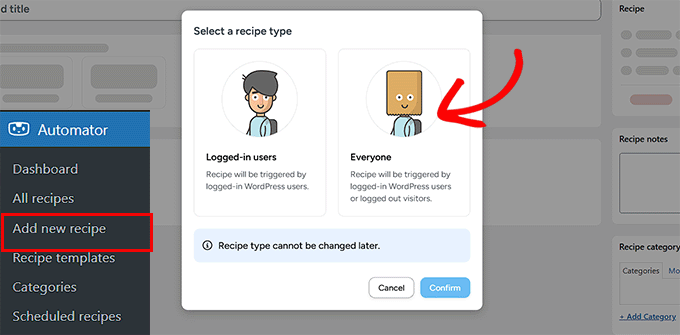
Next, give your recipe a name. This is only for your own reference, so you can name it something simple like ‘Send WooCommerce orders to Google Sheets and Create User Accounts.’
Once that’s done, Uncanny Automator will show you a list of all the plugins and services installed on your site. From this list, select ‘WooCommerce.’
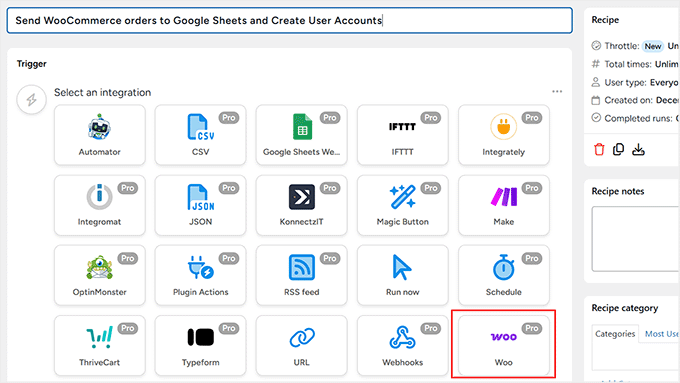
Now you’ll choose the event that should trigger the recipe.
For this workflow, select ‘A product has its associated order completed, paid for, thank you page visited.’ This ensures the automation only runs after a successful purchase.
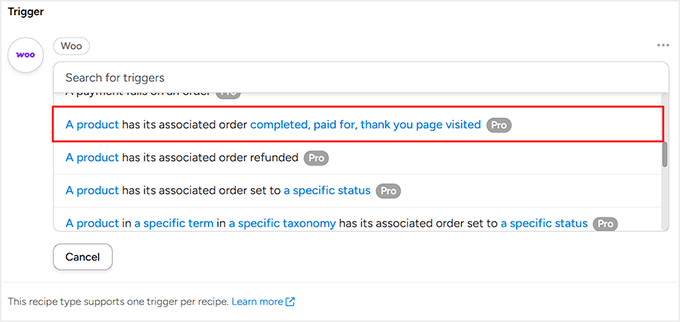
After choosing the trigger, you’ll need to decide when it should fire. I recommend selecting ‘thank you page visited’.
This means the recipe will run as soon as the visitor lands on the thank you page after checkout. If you wait for ‘Completed’, the automation won’t run until you manually mark the order as finished.
Click the ‘Save’ button to continue.
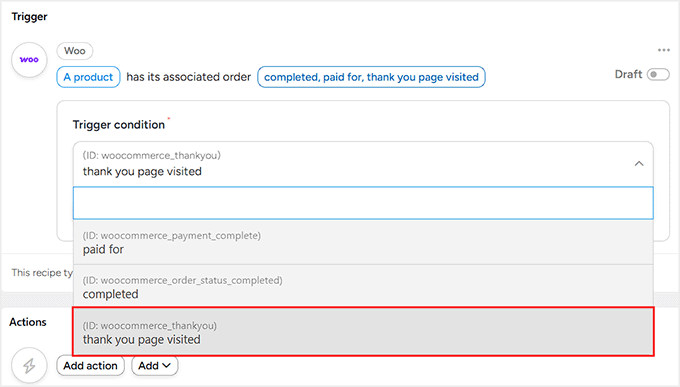
Finally, choose whether the recipe should run for a specific product or for all products. To track every sale in your store, select ‘Any product’ and click ‘Save.’
That’s it. Your WooCommerce trigger is now ready, and the recipe knows exactly when it should run.
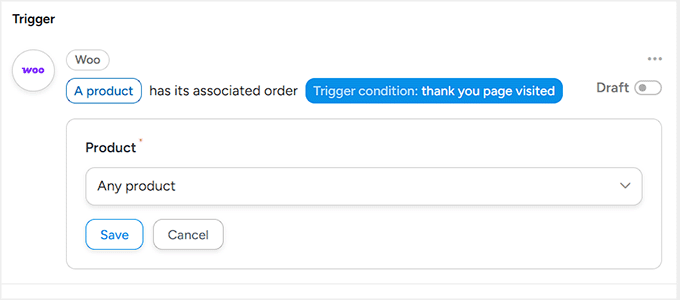
Step 4: Add Google Sheets Action in the Recipe Editor
Now that the WooCommerce trigger is ready, you need to tell Uncanny Automator what should happen next. In this workflow, the next step is simple: send the order details to Google Sheets.
To do that, click the ‘Add action’ button inside your recipe.
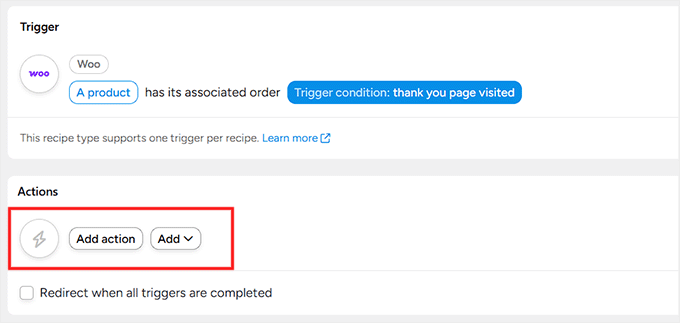
You’ll now see a list of all the integrations available on your site.
From here, select ‘Google Sheets.’

Once you do that, Uncanny Automator will show you the actions it can perform. For this setup, choose ‘Create a row in a Google Sheet.’
This action tells Automator to add a new row to your spreadsheet whenever a WooCommerce order triggers the recipe.
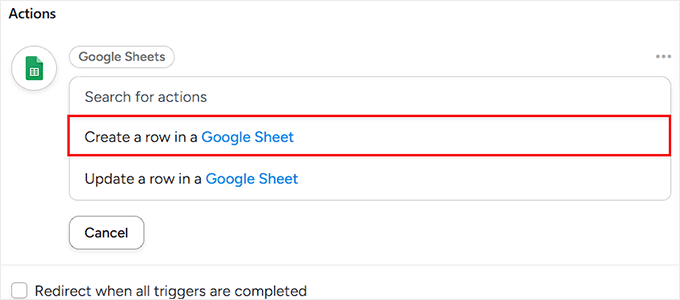
Upon doing that, you’ll see a dropdown where you can choose the Google Spreadsheet you connected earlier. Pick the spreadsheet where you want to store your order data.
Next, choose the worksheet inside that spreadsheet. If your file only has one sheet, you don’t need to worry much here.
But if you’re using multiple tabs, I suggest double-checking that you select the correct one, so your data doesn’t end up in the wrong place.
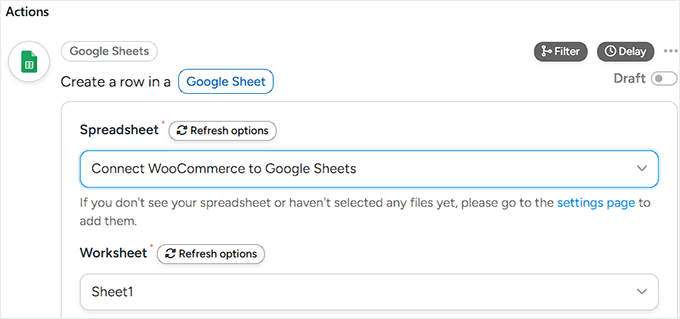
Once that’s done, scroll down to the ‘Rows’ section. This is where you connect your WooCommerce order data to the columns in your Google Sheet.
If mapping sounds complicated, don’t worry—it’s actually very simple. You’re just matching each column in your spreadsheet with the right piece of order information. I like to think of it as assigning values to columns, one by one.
To start, click the asterisk (*) icon next to a field. This opens a list of available data that Automator can pull from the WooCommerce trigger.
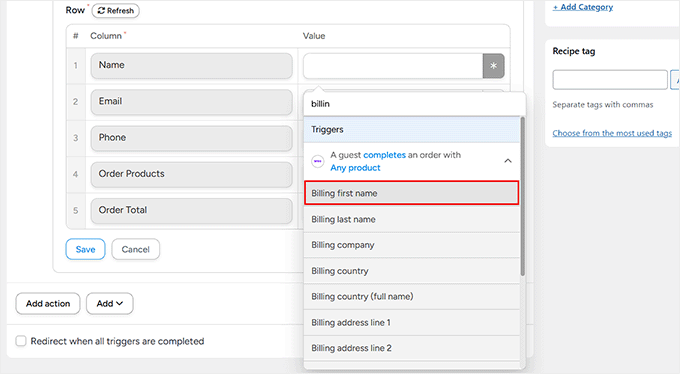
Under the ‘Triggers’ section, you’ll see order details like billing name, email, phone number, products, and order totals.
For example, you can map the Name column to the customer’s billing first name, the Email column to the billing email, the Phone column to the billing phone, the Products column to order products, and the Total column to the order total.
I recommend taking your time here and mapping each column carefully. Once this part is set up correctly, your spreadsheet will stay clean and easy to read, even as more orders come in.
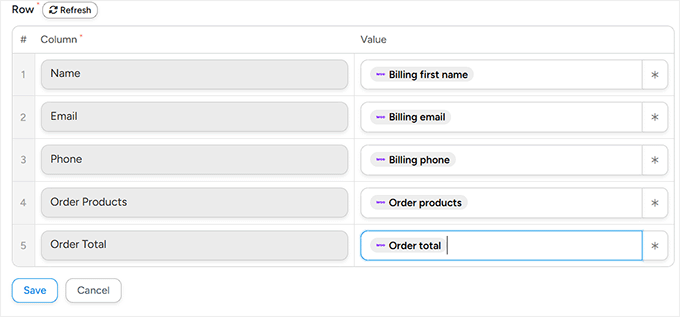
After you’ve mapped all the columns, click the ‘Save’ button to store your settings.
Step 5: Create a WordPress User After a WooCommerce Purchase
Now it’s time to add the second action to your workflow. This action automatically creates a WordPress user when someone purchases an item in your WooCommerce store.
You might be wondering why this is useful. Creating a user account after a purchase is helpful if you plan to give customers access to gated content, courses, digital downloads, or member-only areas later.
It also saves you from manually creating accounts, making the buying experience smoother for customers. To add this second action, click the ‘Add action’ button again in your recipe.
This time, select ‘WordPress’ as the integration.
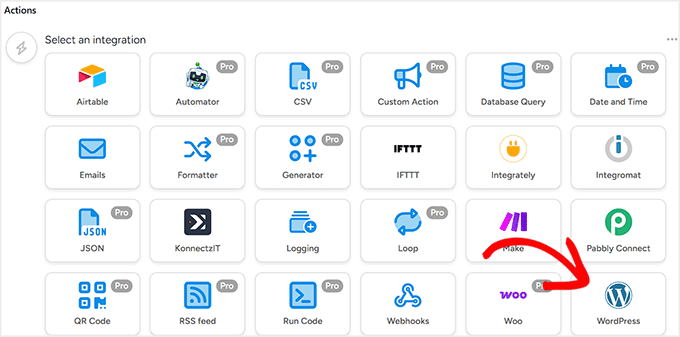
Once the list of actions appears, choose ‘Create a user.’
This tells WordPress to automatically create a new user account when the WooCommerce order trigger runs.
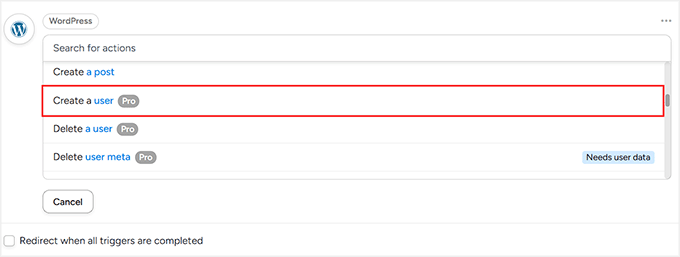
After selecting the action, you’ll see fields to map user details such as username and email.
Just like before, click the asterisk (*) icon next to each field to pull in data from the WooCommerce trigger.
For example, you can use the customer’s billing email for the email field. For the username, I usually select the billing first name or a combination of name and order data.
The key idea is that you’re reusing information the customer already entered during checkout, so nothing extra is required from them.
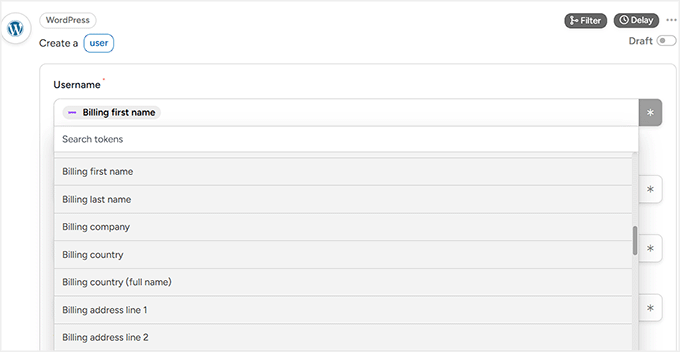
Next, you’ll see a separate field for the password. You can leave it blank, and Uncanny Automator will automatically generate a secure password for the new user.
Alternatively, you can set your own password if you prefer.
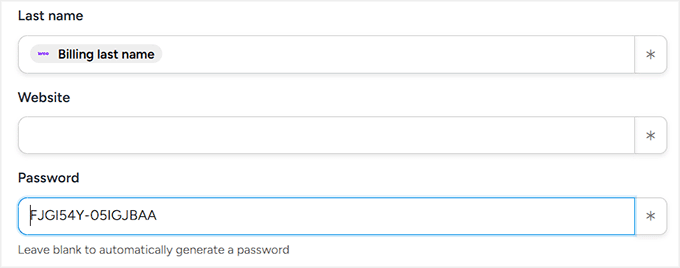
After that, scroll down to the ‘User role’ setting. This is where you choose what role the new user should have in WordPress.
Here, I suggest selecting ‘Customer’ from the dropdown. This role is designed specifically for WooCommerce buyers. It gives them access to their account and order details without giving them any unnecessary permissions inside your WordPress admin area.
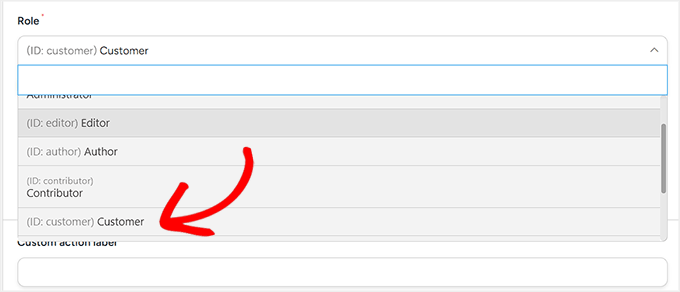
It’s also important to check the ‘Send user notification’ box right below the user role setting.
This ensures your new users receive an email with their login details, allowing them to access their account automatically.
Note that if you add a delay (which I recommend in the next step), the email will arrive shortly after that wait period.
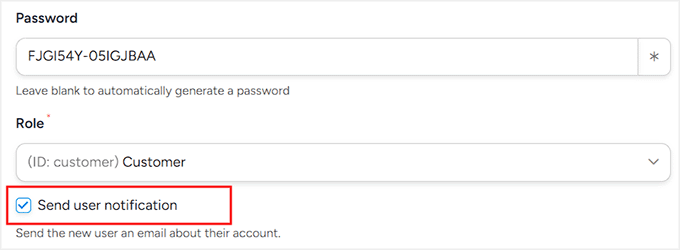
After everything looks good, click ‘Save’ to store your settings.
At this point, the second action is complete. But there’s one more small improvement I recommend making.
Since your recipe now has multiple actions, you can add a delay before this user-creation step runs. This can be helpful in more complex workflows where actions depend on each other or when external services need a little time to finish processing.
To add a delay, click the ‘Delay’ button inside the Actions tab.
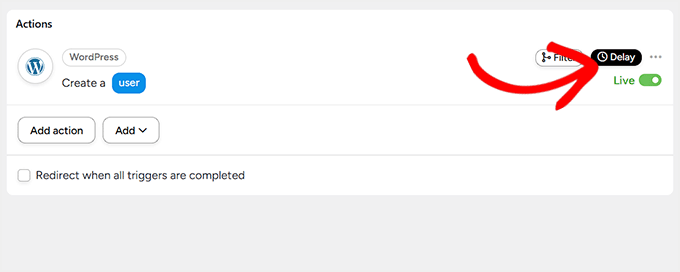
A prompt will open, allowing you to enable the delay option and choose how long Automator should wait before running the action. You can set delays in minutes, hours, or even days.
I recommend setting a 10-minute delay. This gives WooCommerce enough time to fully process the order, handle payment confirmations, and complete any background tasks before the user account is created.
It also helps avoid edge cases where an order might fail or get refunded immediately after checkout.
With the delay added, this action will run 10 minutes after the first action, making your workflow more reliable and predictable.
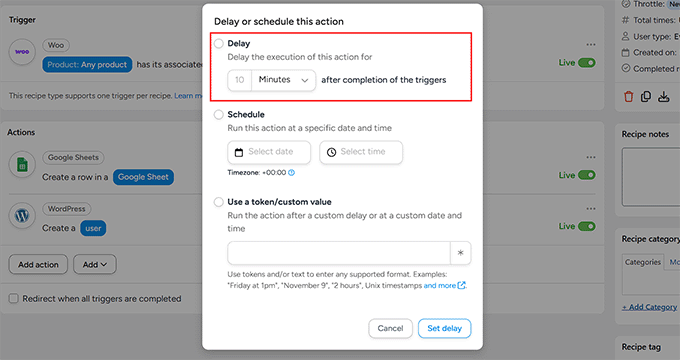
Step 6: Save and Activate Your Recipe
Now that both your WooCommerce trigger and your actions—sending order data to Google Sheets and creating a new WordPress user—are set up, it’s time to make your automation live.
Before that, I recommend double-checking all your field mappings. Make sure the columns in Google Sheets match the correct WooCommerce data, and that the username, email, and user role are properly mapped for the new account.
Once you’re confident everything is correct, toggle the Trigger and Action switches to ‘Live.’ Then, in the right-hand column, switch the recipe status from ‘Draft’ to ‘Live.’
This is it—your automation is now active. From this point forward, every time someone purchases something in your WooCommerce store, Uncanny Automator will automatically add their order details to your Google Sheet and create a WordPress user account.
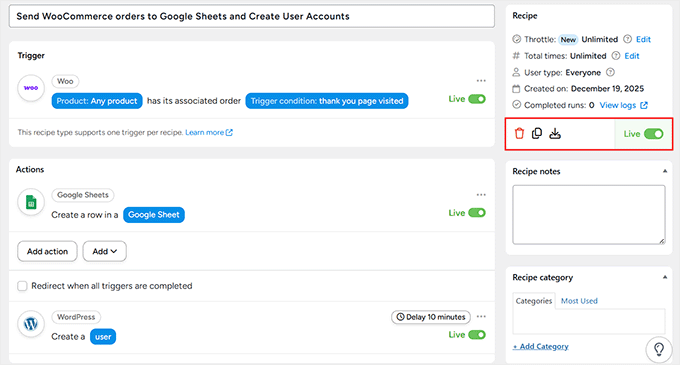
I’ve tested this exact workflow myself, and setting it up took less than 10 minutes.
Compare that to n8n, where you’d need to configure multiple webhooks, parse JSON, handle API keys, and manage server infrastructure—this same automation could take hours, even for experienced users.
The great part is that the process is very similar for any other type of automation you want to set up in Automator.
Whether you’re connecting forms to email services, logging purchases, or triggering course enrollments, the workflow is consistent: select your trigger, choose your actions, map your fields, and go live. It’s that simple.
More Real-World Use Cases for WordPress Automation: What You Can Build (That’s Harder in n8n)
Uncanny Automator isn’t just for simple form-to-spreadsheet tasks. You can create powerful, real-world workflows that save hours of manual work.
Here are some examples that are much easier to set up in Uncanny Automator than in n8n:
1. Automatic Course Access Based on Purchases
If you run an online course site, enrolling students manually or juggling multiple platforms can be a headache. Automator lets you automate the entire process, from purchase to course access, in just a few clicks.
Here’s how it works:
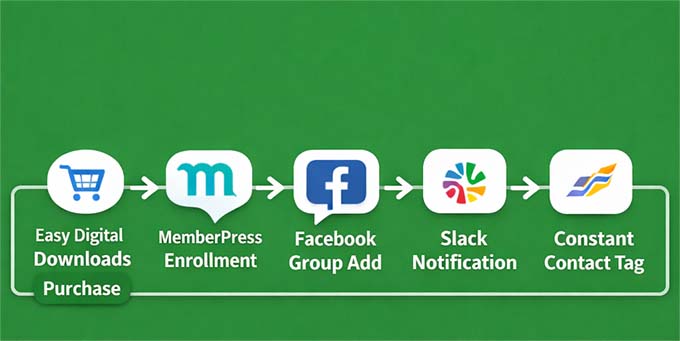
For instance, when a user buys the “SEO Mastery Bundle” in Easy Digital Downloads, Automator automatically enrolls them in all three MemberPress courses.
It also adds them to a private Facebook group, notifies the course instructor on Slack, and tags them in Constant Contact to trigger follow-up emails.
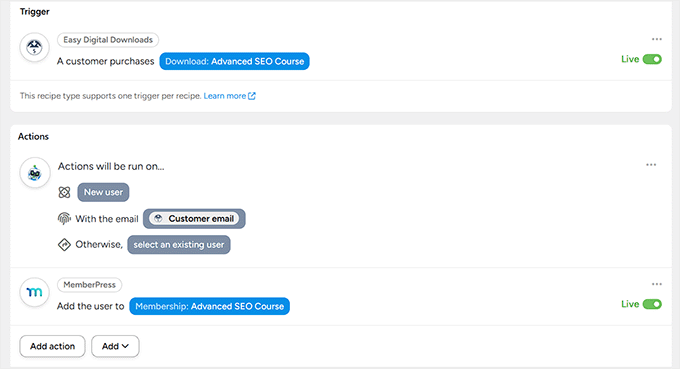
🌟Why it’s easier than n8n: Each of these steps in n8n would require separate webhooks, JSON mapping, and API calls. Automator handles all of this in a few dropdown selections.
2. Lead Scoring & Smart Follow-Up
Keeping track of leads and following up personally can be time-consuming. Uncanny Automator helps you score leads and trigger smart follow-ups automatically, even using AI.
Here’s a simple workflow that you can use for it:
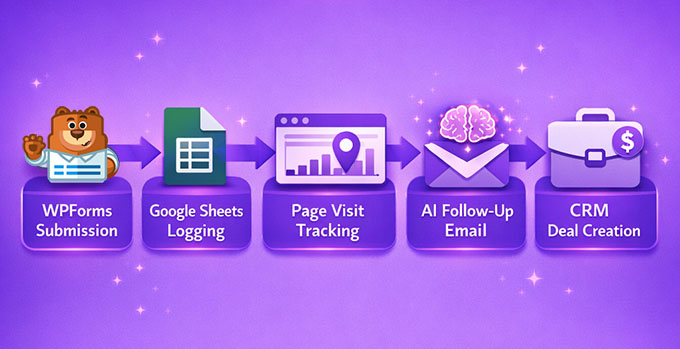
For example, when a user downloads a lead magnet via WPForms, Automator records it in Google Sheets.
You can then set up specific triggers to add points when the user visits high-value pages, like your Pricing or Demo page.
Once a lead reaches 30 points, Automator sends a personalized AI-generated email via OpenAI and automatically creates a HubSpot CRM deal.
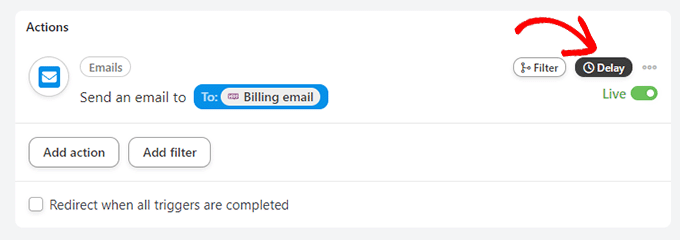
🌟Why it’s easier than n8n: In n8n, connecting WPForms alone would require setting up a webhook for the form submission, parsing the JSON payload, mapping fields to Google Sheets, tracking page visits via additional triggers, and configuring API calls for both the AI email and CRM deal creation.
You can check out our beginner’s guide on email marketing automation to learn more tips for setting up smart, automated follow-ups.
3. Share AI Summaries on Social Media When a Post Is Published
I also recommend using Uncanny Automator to automatically create AI-generated summaries for your new blog posts and share them on social media. It’s a simple but powerful workflow that saves time and keeps your content visible.
Here’s an example of an automated workflow:
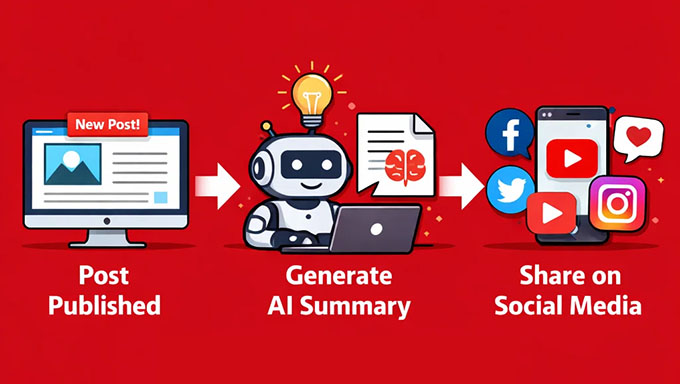
When a blog post is published, Automator sends the content to OpenAI, which creates a short summary suitable for social media.
The workflow then posts this summary automatically to your connected social accounts.
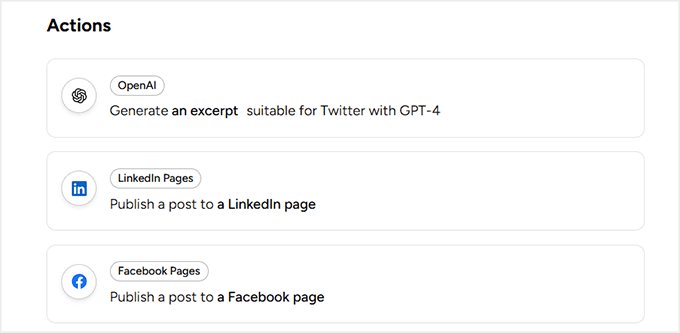
🌟Why it’s easier than n8n: In n8n, you’d need multiple webhooks, JSON parsing, and separate API calls to OpenAI and each social network.
To get started with more automations, take a look at the following guides:
- How I Send WooCommerce Order Notifications Straight to WhatsApp
- How to Automatically Post to Threads From WordPress
- Beginner’s Guide to Automatically Post to Facebook From WordPress
- How I Save Time Scheduling LinkedIn Posts in WordPress
- How to Automatically Publish from WordPress to Instagram
FAQs About Using Uncanny Automator vs. n8n
If you’re trying to decide between Uncanny Automator and n8n, these are the questions I see most often from beginners.
Does Uncanny Automator slow down my WordPress site?
No, it does not slow down your site. Uncanny Automator runs after your page has finished loading, not while visitors are waiting.
In simple terms, your page loads first for the visitor. Once everything is visible, Automator quietly runs in the background to send emails, update records, or trigger other actions. Because of this, visitors don’t experience slower page speeds.
Can I migrate my existing n8n workflows to Uncanny Automator?
Yes, but you’ll need to rebuild them manually. There’s no one-click migration tool because n8n and Automator work very differently.
The good news is that the process is simple:
- Write down what triggers your n8n workflow (for example, a form submission).
- List the actions that happen next (send email, add to CRM, update data).
- Recreate the same steps using Automator’s dropdown menus.
Most users find that this takes much less time than building the original n8n workflow, and ongoing maintenance becomes easier.
What happens if I run too many automations on my site?
Automator itself doesn’t limit you, but your hosting does. On most shared hosting plans, running a reasonable number of automations works fine.
If your site runs hundreds or thousands of automations per hour, you may need better hosting, like managed WordPress hosting or a VPS. Automator includes logs that help you see if a workflow is taking too long, so you can adjust or split it if needed.
Does Uncanny Automator work with custom post types and custom fields?
Yes, it does. If your site uses custom post types (like “Courses,” “Events,” or “Listings”), Automator can detect and work with them automatically.
It also supports popular custom field plugins like Advanced Custom Fields, Meta Box, Pods, and Toolset. This means you can trigger automations when a custom field changes or fill custom fields automatically—without writing code.
Can I use Uncanny Automator with WordPress multisite?
Yes, Automator works with multisite setups. You can activate it across the entire network or use it on individual sites, depending on your needs.
I hope this article helped you learn how to create n8n-like automation in WordPress. You may also want to see our guide on using AI to generate WooCommerce product descriptions and our top picks for the best AI automation tools for WordPress.
If you liked this article, then please subscribe to our YouTube Channel for WordPress video tutorials. You can also find us on Twitter and Facebook.
The post How to Add n8n Like Automation in WordPress (Easier & Cheaper) first appeared on WPBeginner.
from WPBeginner https://ift.tt/IVWYxre
More links is https://mwktutor.com
